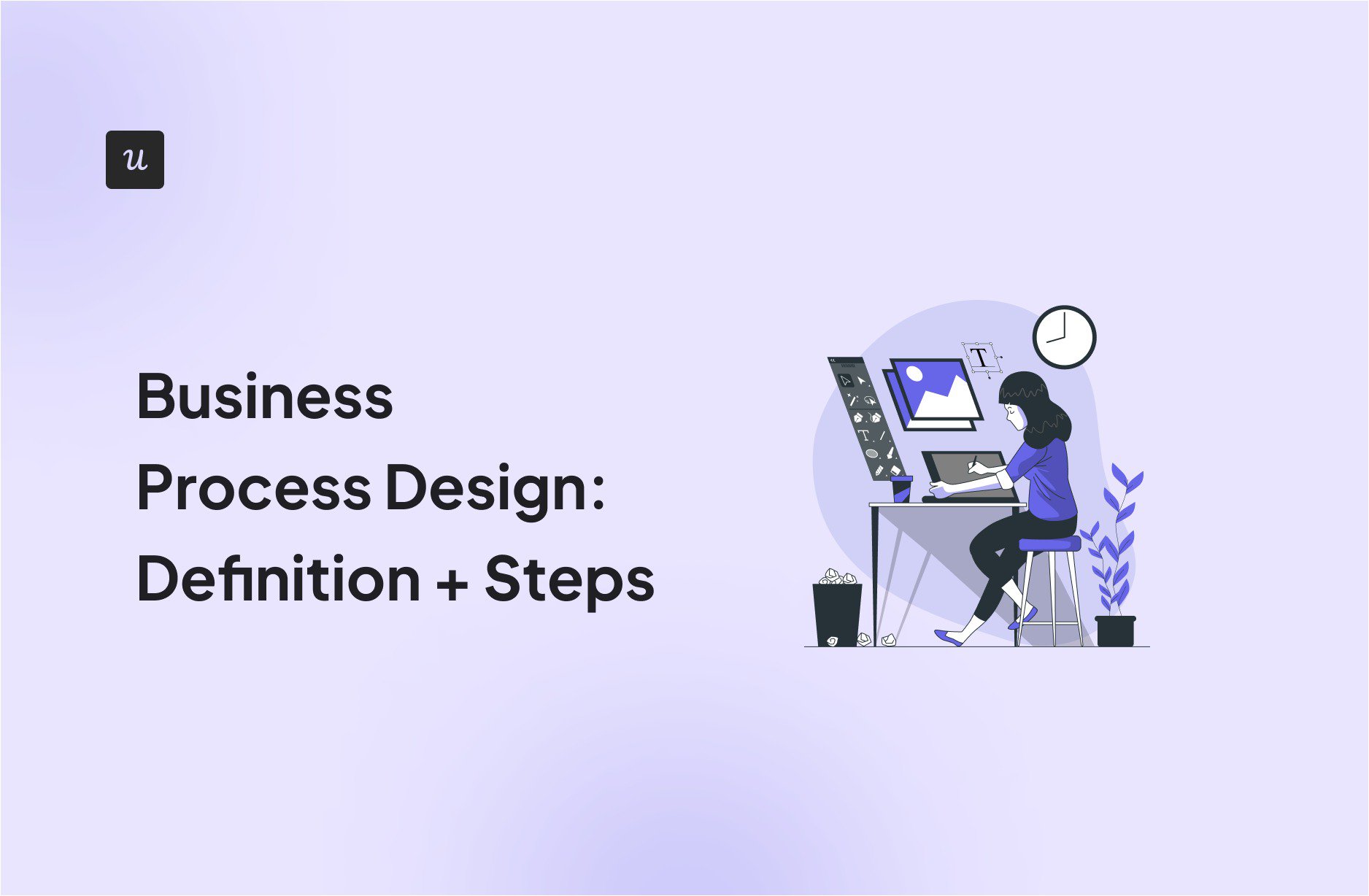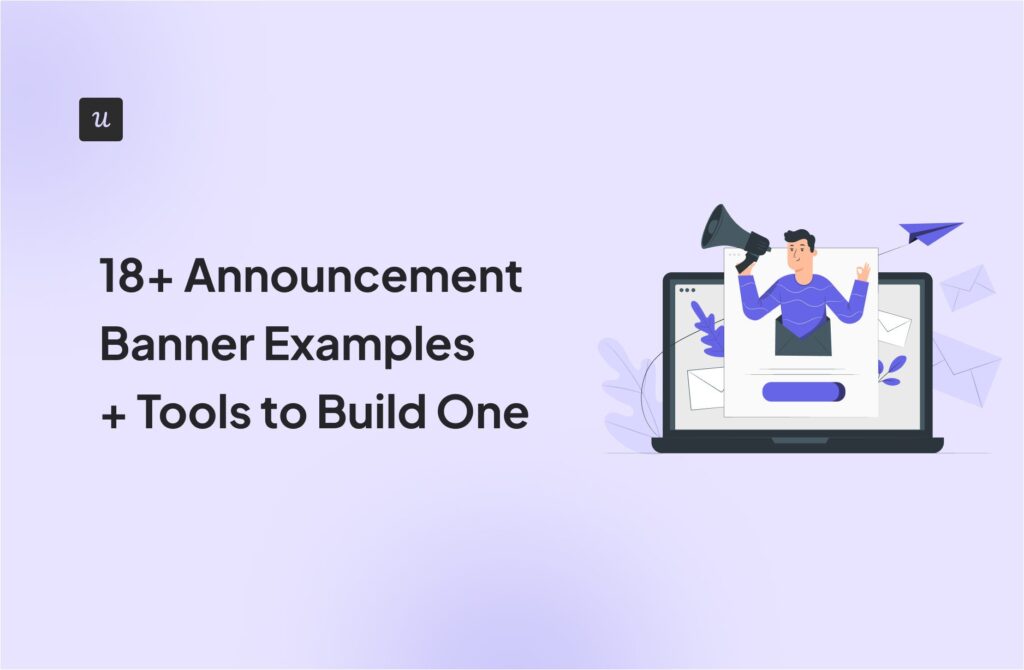
A robust business process design enhances efficiency, reduces overheads, increases project success rates, and facilitates innovation.
From the article, you will discover the principles of effective process design and learn how to design streamlined processes for your product, marketing, customer success, sales, and design teams.
But let’s cover a few basics first.
Try Userpilot Now
See Why 1,000+ Teams Choose Userpilot

TL;DR
- Process design involves creating, analyzing, and refining workflows in various business contexts.
- Effective process design leads to higher efficiency, better consistency, improved product quality, better ROI, and enhanced compliance.
- Common process design challenges include unnecessary complexity, lack of information, personal bias, and resistance to change.
- Key process design principles are flexibility, scalability, cost-effectiveness, user-friendliness, standardization, continuous improvement, and customer-centricity.
- The process involves seven steps:
- Identify the specific area of operations that needs improvement based on current needs and organizational goals.
- Set specific, measurable goals for process improvement using frameworks like SMART.
- Create an objective, detailed map of the current process using multiple data sources.
- Identify all stakeholders involved in the process and define their roles using tools like a RACI matrix.
- Use the process map and stakeholder analysis to design an improved process.
- Create and test low-fidelity prototypes before developing fully functional versions of the new process.
- Gradually roll out the new process, conduct A/B tests, and continuously monitor and improve based on feedback and performance.
- Userpilot is a digital adoption platform with analytics, feedback, and engagement features. Book the demo to see how it can help you improve the processes around your SaaS product.
What is process design?
Process design is a part of operations management. It involves creating, analyzing, and refining workflows and procedures within an organization.
In the SaaS context, this could be:
- Product discovery processes, like user research or feature prioritization.
- Customer support processes, like ticket management and issue escalation.
- Marketing content creation and distribution.
- Customer onboarding procedures.
Large SaaS organizations may have a dedicated product operations manager responsible for optimizing the processes. Smaller ones usually can’t afford the luxury, and team managers do the job.
The objective?
To improve productivity, enhance the deliverable quality, and boost ROI.
Benefits of business process design
Solid process design helps companies improve their performance across multiple dimensions.
By engaging in the design process, teams can better understand what they do and how they do it. Such understanding is essential to make improvements.
What kind of improvements are we talking about?
- Higher efficiency: It can help you identify outdated technology and tasks that you can easily automate. Not only does it improve productivity but also employee morale.
- Better consistency: By documenting your processes, you enable employees across the organization to deliver consistent results.
- High-quality outcomes: Improving processes like quality control lets you ship a reliable final product. This reduces the need for expensive rework in the future and improves customer satisfaction.
- Better ROI: Robust processes help you reduce costs by improving efficiency and allocating resources to initiatives with the best ROI (e.g., the best customer acquisition channels).
- Compliance: Established processes make it easier to follow regulations and rules, like data protection laws.
- Continuity: Well-documented processes make it easier to onboard new team members and reduce disruption caused by staff leaving.
Challenges of process design
While on paper it may look straightforward, process design comes with pitfalls.
Some of them include:
- Complexity: Teams may unnecessarily overcomplicate their processes. Or the nature of the processes can be too complicated for their resources and experience.
- Lack of information: Designing reliable processes may be hard without understanding the product or customer.
- Bias: If you’re a part of the process, it may be difficult to detach yourself and analyze it objectively.
- Change resistance: Humans are creatures of habit, and implementing new processes could be challenging and lead to low adoption rates. Which results in low ROI.
Principles of effective business process design
Before we start designing your process, here are eight principles of process design:
- Future-proof flexibility: Design processes that you can adapt to evolving organizational needs or industry changes.
- Scalability: Make the processes easy to scale as your needs grow.
- Cost-effectiveness: Balance implementation and operational costs against benefits to ensure it’s viable.
- Efficiency and effectiveness: Minimize resource use while maximizing desired outcomes and ensuring the right quality.
- User-friendliness and simplicity: Create intuitive and straightforward processes to boost their adoption.
- Standardization: The process needs to deliver consistent results regardless of who performs the task.
- Continuous improvement: Regularly update processes to align them with business changes.
- Customer-centricity: Design with end-users in mind to enhance their overall experience.
How to design effective business processes: 7 Steps
Now that we know the key principles, let’s dive into the design process.
Here’s our 7-step guide.
Step 1: Define the problem or opportunity
The first step is about identifying the area of your operations that you want to improve.
What does your team need at the moment? What’s the biggest problem it’s facing? What are your key business goals?
For example, you may want to address low customer satisfaction and high customer support costs by overhauling your support process. Or improve the adoption rates of a newly launched product by refining the onboarding process.
At this stage, this is only a high-level definition.
Step 2: Set clear objectives and goals
Having decided what problem to address, it’s time to zero in on the specific goals you want to achieve.
This will give you focus and measure the success of your new process. And gain the backing of senior stakeholders.
If needed, use a goal-setting framework like SMART (Specific, Measurable, Achievable, Realistic, Timebound).
For example, if you want to reduce customer support costs, your SMART goal could be “Reduce customer support costs by 15% by the end of Q3”.

Step 3: Map current processes
The next step involves mapping the current process.
In our case, that’s everything that happens from the moment the customer comes across an issue until it’s successfully resolved.
Here’s an important thing to remember: map what happens and not what you think happens. As mentioned, people involved in the process may be biased and not able to realize what they do.
To get objective insights, use multiple data sources.
For example, track user actions in-app, analyze the content of live chat conversations and phone call transcripts, and collect customer feedback.
This will help you create a detailed process map. Use Miro or Canva to visualize it easily.

Step 4: Analyze stakeholders and roles
After creating the process maps, consider all the stakeholders involved.
If you’re improving customer support processes, these are most likely internal players, like the support agents and customer success managers.
For more complex processes, like your supply chain, however, this could be a mix of internal and external stakeholders.
Sometimes, a lot of them!
To stay on top of who is who, create a RACI matrix.
In the grid rows, list all the stakeholders, and in the columns, list all the steps in the process or actions.
Next, annotate who is responsible (R), accountable (A), consulted (C), and informed (I) at each step.

Step 5: Design the ideal process
Next, use the process map and the RACI matrix as springboards for the new process design.
This could be in the form of a brainstorming session involving the team members who are responsible for implementing it.
Don’t stop there:
Involve other departments to gain their unique perspectives and ideas. For example, even if the product team isn’t involved in the customer support process, they may still offer valuable insights.
When you identify issues in the process, use problem-solving techniques like the 5 Whys and the fishbone diagram to get to the root cause.

The ultimate goal of this stage isn’t designing the perfect process because it’s impossible to do in isolation. All you can do is develop hypotheses on what could improve it.
Step 6: Develop and test prototypes
Now, it’s time to test the hypothesis formed in the previous stage.
You want to do it by investing minimum effort and resources, so start by creating and testing low-fi prototypes before developing a fully functional version.
For example, if you think a resource center may improve customer satisfaction and reduce support costs, conduct a fake door test to see if users are interested in this kind of solution.

If yes, develop a few modules and conduct further experiments to validate the idea.
Once the prototypes are fully functional, conduct user testing sessions to refine the solutions further before implementing them across the organization.
Step 7: Implement and monitor
When you implement the new process, don’t do it for all users at once.
For instance, if it’s a new onboarding process, roll it out for one segment and test its performance. Use feedback to make adjustments and release it to another group.
Another way to test the new workflow is by conducting A/B tests. That’s where you run the new and old versions side by side and compare how they perform.

As mentioned, one of the principles of process design is continuous improvement, or Kaizen. This means that the iterative testing never really stops. There are always things that you can improve.
Conclusion
A significant process re-design can dramatically improve efficiency and productivity, especially if you’ve relied on obsolete technology or procedures. However, remember it isn’t a one-off exercise but rather a continuous process.
Userpilot is a product growth platform with user behavior analytics, feedback, and engagement features.
If you’d like to learn how it can help you improve customer support, user onboarding, marketing, or product development processes, book the demo!



![10 Free Product Roadmap Templates You Need in 2026 [+Free Download] cover](https://blog-static.userpilot.com/blog/wp-content/uploads/2026/01/10-product-roadmap-templates-you-need-in-2026-free-download_d8269f0b0b9749f6ad7b519ab7ac1833_2000-1024x670.png)



